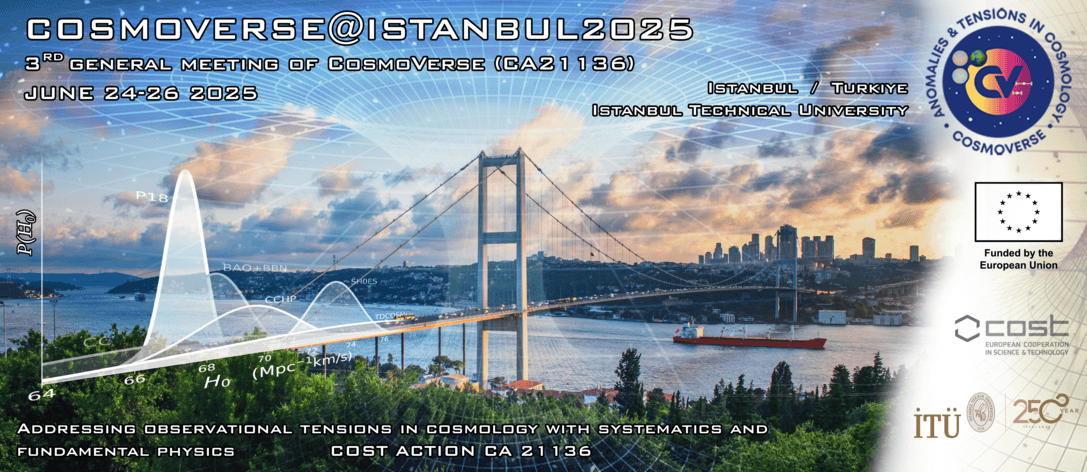Speaker
Description
We propose a novel dark energy mechanism rooted in the microscopic structure of spacetime, where quantum-induced topological transitions give rise to an effective cosmological constant. Within the framework of Euclidean Quantum Gravity, gravitational instantons emerging at the spacetime foam level induce changes in topology, activating the Gauss-Bonnet term in four dimensions. This leads to a time-evolving dark energy density proportional to the instanton density. Using quantum field theory techniques, we derive the corresponding modified Friedmann equations and analyze the evolution of the Universe under this framework. The model successfully reproduces the thermal history of the Universe and yields a fit to observational data - including type Ia supernovae, Baryon Acoustic Oscillations, and cosmic chronometers - that is statistically comparable to the standard $\Lambda$CDM model. Moreover, the scenario shows promise for addressing the $H_0$ and $\sigma_8$ tensions. These results position topological dark energy as a compelling alternative to the concordance model.

